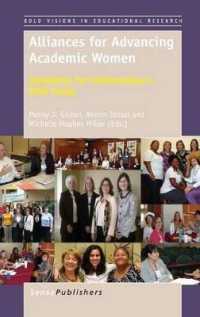- ホーム
- > 洋書
- > 英文書
- > Computer / General
Full Description
Operational research helps in optimizing resource allocation, production processes, and logistics, while data science provides insights through data analysis and predictive modeling.This book aims to detail the application of operations research and data science methods as decision support systems to manage complex constraints.
-

- 和書
- かのんのぜんぶ。
-

- 電子書籍
- 奪われよ、かの野獣に4






